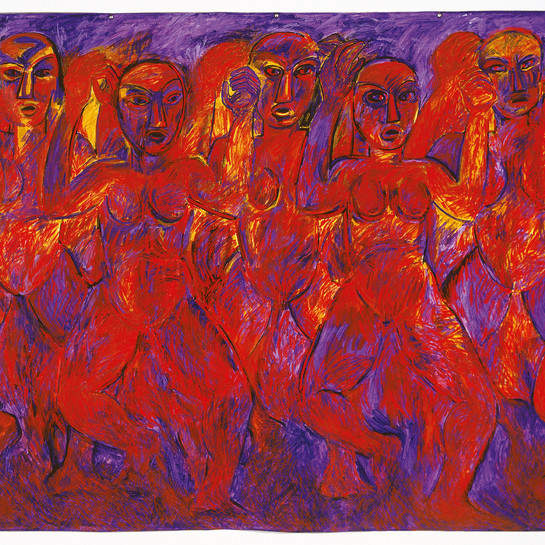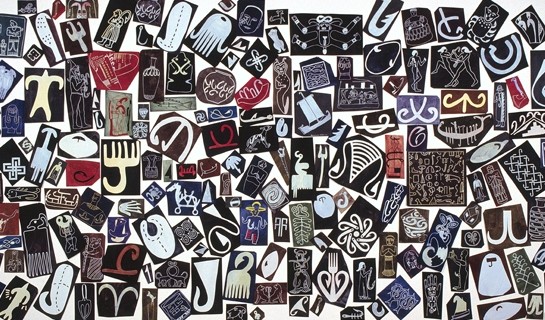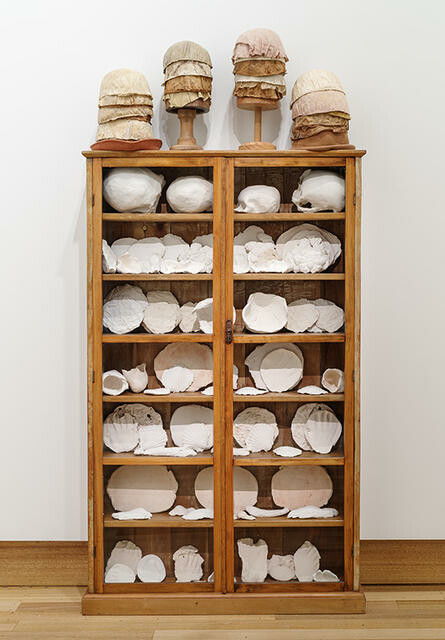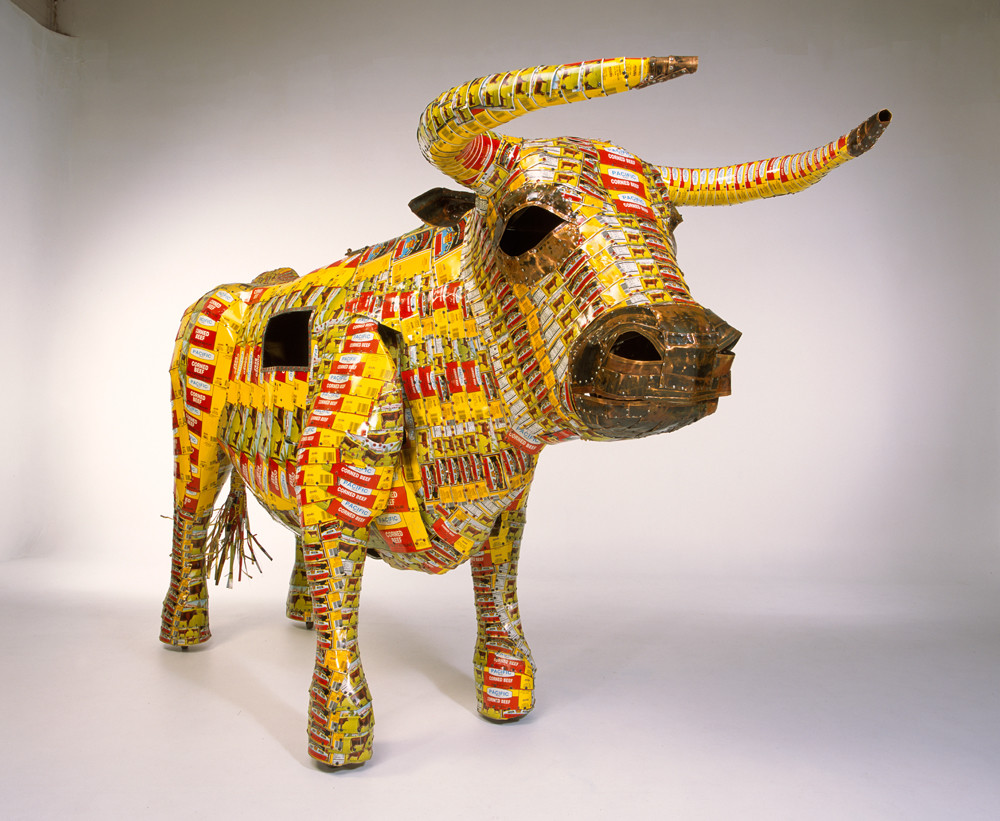Christine Hellyar
Aotearoa New Zealand, b.1947
Body parts: White china cupboard
- 1989-1990
- Mixed media
- Purchased, 1999
- Reproduced with permission
- 1620 x 985 x 187mm
- 99/254.1-214
Tags: cupboards, furniture, hats, plates (dishes), seashell, skeleton and skeleton components, skulls, white (color)
Christine Hellyar’s works draw on the traditions of museum displays while also subtly undermining them. Here, she presents a domestic china cabinet as though it is a vitrine of plaster archaeological replicas – but what she has preserved and carefully organised is unexpectedly intimate. Mixed in with the rough casts of shells and food plates are skulls, cavities and imprints of hands and feet, evoking private bodies and other lives.
(We do this, 12 May 2018 - 26 May 2019)
Exhibition History
Wunderbox, 28 November 2008 -15 February 2009
The artist as collector, recycler, and natural historian, Christine Hellyar has never subscribed to the idea that sculptures should be grand and singular objects. The word ‘sculpture’ seems inadequate to describe many of her works, which look like artefacts imported into the Gallery from some other time and place. With their weathered natural forms, her artworks remind us of the vast cycles of change and transformation that govern the life of things. But they also mark the distance between those cycles and the experience of contemporary gallery-goers, as we peer in through glass at objects whose names and functions we scarcely recognise.
Christine Hellyar is fascinated by displays found in traditional Natural History museums and she has arranged this collection in that style. The white china clay objects have been cast to resemble skulls and other body parts, as well as plates and food.
Hellyar constructs her assemblages to create a personal sculptural language in which the skills of sewing and craft techniques are an integral part. She has made a number of cabinets, questioning the worth of the gallery as a repository for accumulated cultural artefacts. Her work challenges expectations and creates new possibilities for thinking about the natural and social world.
Hellyar was born in New Plymouth and studied at Elam School of Fine Art, University of Auckland. She was Lecturer in Sculpture at Elam from 1981 to 1996. In 1982, at the Biennale of Sydney, Hellyar was the first woman sculptor chosen to represent New Zealand. She was also selected to make a permanent work in the International Sculpture Symposium in Seoul in 1988. (2006)



